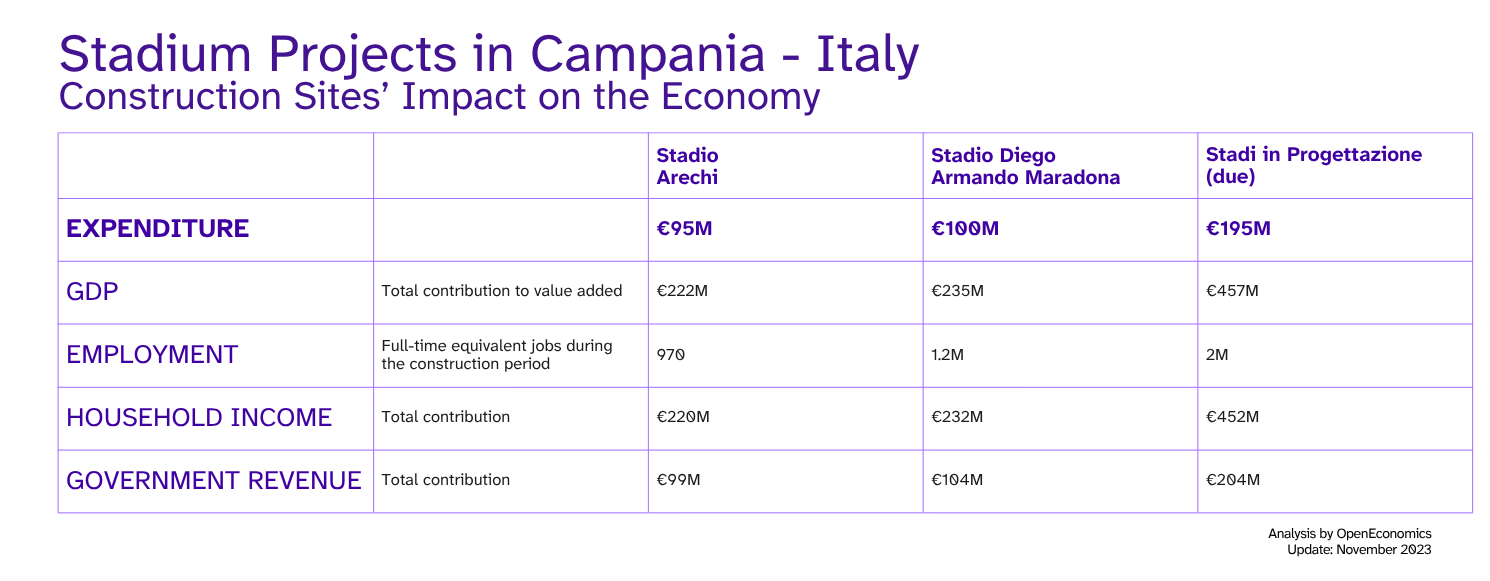Renovating a stadium is not just an architectural project — it’s an economic operation that creates jobs, income, and tax revenues. OpenEconomics has measured its impact through two key case studies.
When sport “renovates” the territory
According to a new economic impact study conducted by OpenEconomics, the renovation of sports facilities in Naples and Salerno will generate €457 million in GDP, based on €195 million in total public investment.
The project targets Campania’s two main stadiums: the Diego Armando Maradona Stadium in Naples and the Arechi Stadium in Salerno. Both will undergo modernization works over a three-year construction period.
Public investment and national economic impact
The study employs a multi-regional Italian Social Accounting Matrix (SAM) model, updated to 2022, to estimate the direct, indirect, and induced effects of public spending in sports infrastructure. The result: a spending multiplier of 2.49, with benefits spread across the national economy. This means that every euro spent yields €2.49 in economic value.
Key estimates:
- €457 million in GDP
- €204 million in tax revenues
- €452 million in household income
- Around 2,000 jobs created across several regions
Stadium renovation: regional breakdown of impact
The regions that benefit the most are:
• Campania: €158 million in GDP (34%), over 720 jobs
• Lombardy: €73 million in GDP, over 300 jobs
• Apulia: €43 million in GDP
• Lazio: €37 million in GDP

Focus: impact of each stadium
A closer look at the economic impact of each stadium’s renovation reveals significant differences:
Diego Armando Maradona Stadium in Naples
The renovation of the Maradona Stadium is expected to generate €235 million in economic impact, with:
- 1,200 jobs created
- €232 million in household income
- €104 million in tax revenues
- Over 35% of total impact located in Campania
Arechi Stadium in Salerno
The Arechi Stadium renovation is estimated to generate €222 million,with:
- 970 jobs created
- €220 million in household income
- €99 million in tax revenues
- Again, over 35% of the total value remains in Campania
If you enjoyed this article, follow OpenEconomics on LinkedIn to stay updated on our latest insights into the impact of sports — and other — infrastructure.












